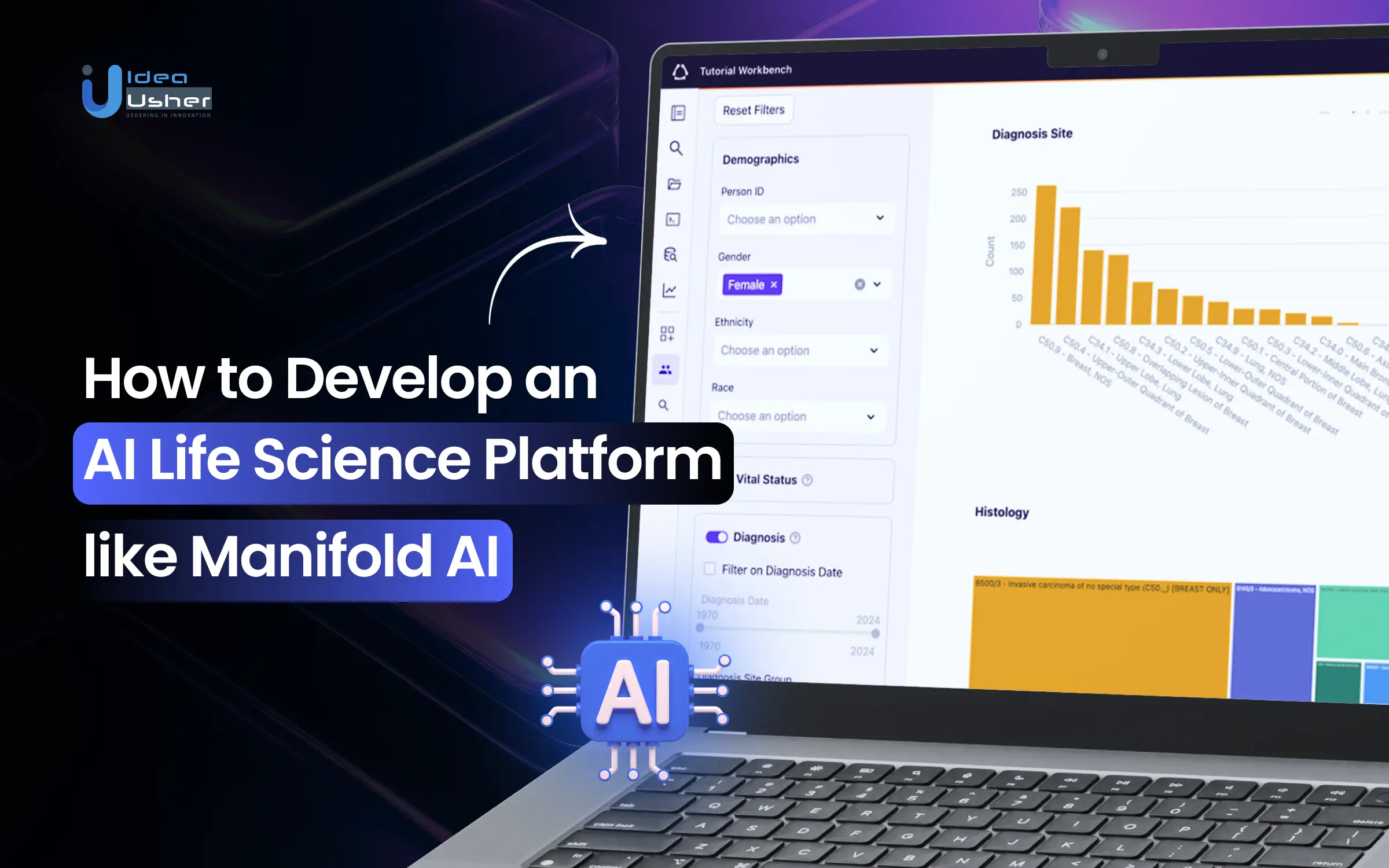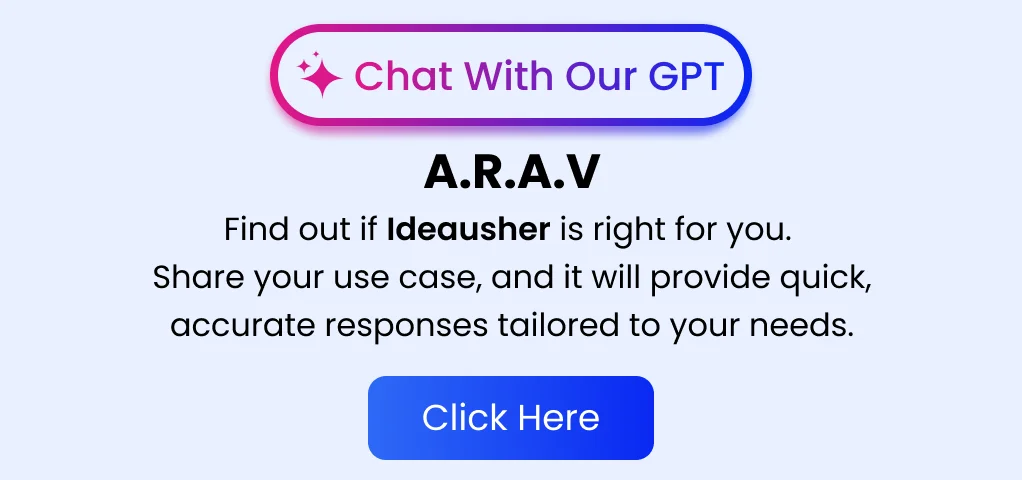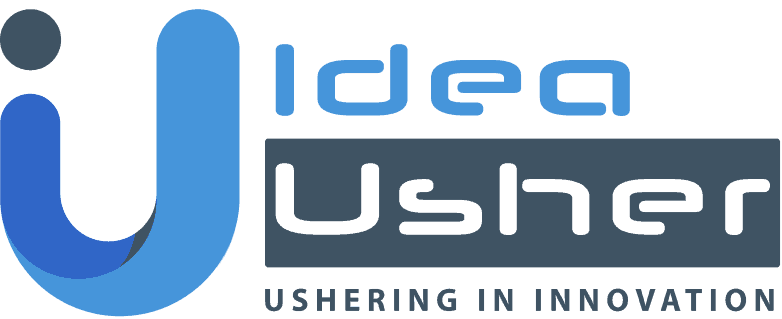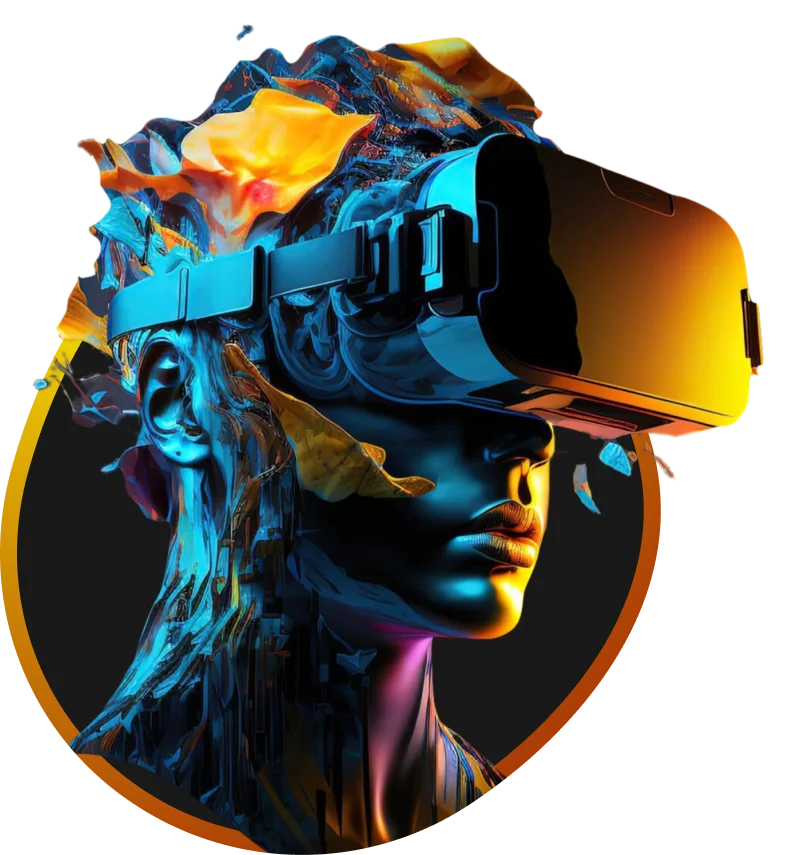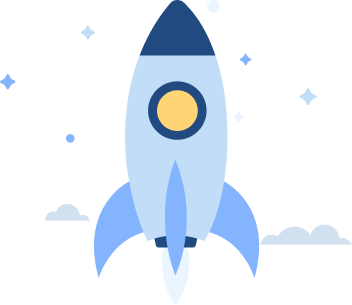The life sciences are rapidly transforming with the integration of artificial intelligence, unlocking faster drug discovery, advanced diagnostics, and more personalized patient care. Platforms like Manifold AI are setting new benchmarks by enabling researchers and healthcare innovators to analyze vast datasets, uncover hidden patterns, and accelerate breakthroughs that were once thought to take years. This fusion of AI and life sciences is not just enhancing operational efficiency but also opening new pathways for innovation in healthcare and biotechnology.
By merging advanced AI algorithms with secure data systems, platforms like Manifold AI help researchers analyze complex datasets, identify new drug targets, and accelerate life science breakthroughs. With experience building AI solutions for healthcare and biotech, IdeaUsher knows how to create an AI life science platform that manages sensitive data while delivering real impact. This blog will guide you through developing your own AI life science platform, enabling you to harness intelligent analytics for faster, more accurate research.
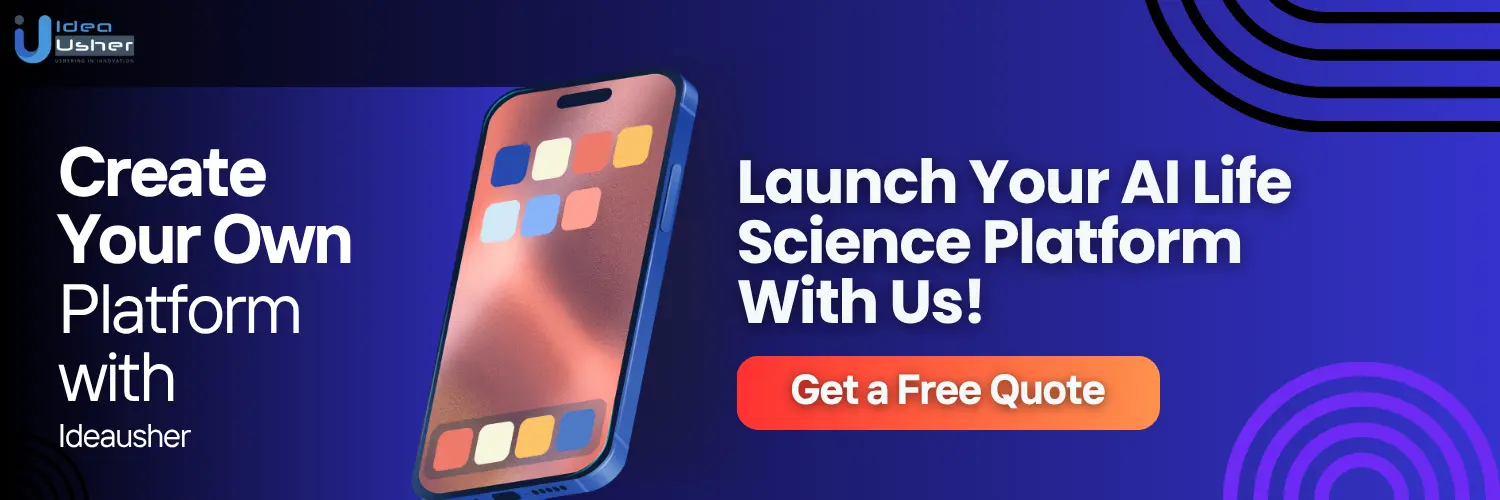
What is an AI Life Science Platform: Manifold AI?
Manifold is an AI-native platform for modern life sciences research, enabling researchers to ingest, harmonize, and analyze diverse biomedical datasets like genomics, clinical records, and imaging into an analysis-ready data lake. It supports AI-driven analytics, cohort building via natural-language queries, and on-demand computational workspaces (e.g., R, Python, Jupyter). With built-in compliance features such as HIPAA, GDPR, 21 CFR Part 11, and audit logs, Manifold streamlines secure, scalable collaboration across institutions.
Business Model
Manifold AI provides a customized, enterprise-level platform for clinical and biomedical research. Institutions like Indiana University Cancer Center and Emory’s Winship Cancer Institute use it to ingest, curate, analyze, and collaborate on large multimodal datasets from genomics to clinical trial data and imaging via a unified, AI-enabled interface.
Revenue Model of Manifold AI
Manifold uses a custom enterprise pricing model based on subscription tiers and professional services for research and biopharma organizations. Pricing depends on platform scope, deployment type, and collaboration scale.
- Platform Licensing: Ongoing access to data integration, AI analytics, and workflow modules.
- Professional Services: Custom onboarding, integration, training, and SLAs to support large research teams.
- Strategic Collaborations: Partnerships with institutions like the Broad Institute for co-developing next-gen analytics and AI tools for biomedical research
How Manifold AI Works?
Manifold AI transforms clinical research by integrating biomedical data into a secure, unified platform. This AI life science platform streamlines workflows, speeds insights and collaboration across institutions, and maintains data integrity and compliance.
1. Data Ingestion & Harmonization
Manifold enables the ingestion of various data types, including clinical, genomic, imaging, and biospecimen data. These datasets are automatically standardized, allowing researchers to access and analyze them without extensive preprocessing. The platform also supports integration with systems like REDCap, OnCore, and LIMS.
2. Automated Participant Engagement
The platform supports electronic consent capture, survey administration, and biospecimen collection, allowing participants to enroll and update consents remotely. Automated communication tools improve compliance and retention, enhancing study efficiency within an AI life science platform like Manifold AI.
3. AI-Powered Data Analysis & Pattern Recognition
Manifold AI applies machine learning to integrated datasets to identify biomarkers, stratify patients, and predict outcomes. This continuous learning capability enhances predictive accuracy, a core feature of a robust AI life science platform.
4. Real-Time Reporting & Visualization
Interactive dashboards deliver live updates on study progress, cohort insights, and key metrics. This feature empowers clinical teams with actionable data for swift decision-making in AI life science platform development and deployment.
5. Governance & Compliance
The platform adheres to industry standards, including SOC 2 Type II, HIPAA, and 21 CFR Part 11. It incorporates features such as two-factor authentication, audit logs, and secure data transfers to maintain data integrity and confidentiality.
Why You Should Invest in Launching an AI Life Science Platform?
The AI in life science analytics market is experiencing significant growth. According to industry reports, the global AI in life science analytics market was valued at USD 1.7 billion in 2023 and is projected to reach USD 3.6 billion by 2030, growing at a CAGR of 10.9% from 2024 to 2030. This growth is driven by the increasing demand for AI-powered solutions to enhance drug discovery, diagnostics, and personalized medicine in the healthcare sector.
Manifold AI, a leading AI platform in life sciences, raised $15 million in its Series A funding round, backed by Radical Ventures and Amplify Partners. This demonstrates strong investor confidence in the potential of AI-driven drug discovery and healthcare innovation.
Isomorphic Labs, a subsidiary of Alphabet for an AI life science platform, raised $600 million in its first funding round to revolutionize drug discovery through AI. The substantial investment reflects the growing interest in AI applications for transforming pharmaceutical research.
Chai, an AI biotech startup backed by OpenAI, raised $70 million to develop an AI-driven drug discovery platform, further showing that investors are keen to back platforms leveraging AI to address challenges in the life sciences.
The surge of investment in AI life science platforms signals a major shift in healthcare. For investors, it offers a chance to enter a fast-growing market with high potential for growth and returns. Supporting these platforms allows investors to help drive innovations that could transform healthcare’s future.
Transforming Healthcare and Research with AI Life Science Platforms
AI life science platforms are transforming healthcare and research by accelerating discovery, enhancing patient care, and improving collaboration. They leverage advanced analytics and secure data sharing to overcome traditional barriers, driving innovation and better outcomes in the life sciences sector.
1. Drug Discovery & Development
AI life science platforms accelerate drug discovery by using deep learning to predict molecular interactions and biochemical effects. This reduces development cycles from years to months and cuts costs by enabling early identification of promising compounds, optimizing R&D efforts with greater precision.
2. Enhancing Precision Medicine & Patient Care
By integrating genomics with electronic health records, AI platforms support personalized treatment plans tailored to individual genetic and disease profiles. This improves outcomes by targeting therapies effectively and minimizing adverse reactions, advancing precision oncology and rare disease management.
3. Improving Research Collaboration & Data Sharing
AI platforms offer secure, cloud-based environments that enable seamless sharing of biomedical data among global research teams. Breaking down data silos fosters collaboration and accelerates discovery, supporting large-scale initiatives tackling complex challenges like cancer genomics and infectious diseases.
4. Accelerating Clinical Trials & Regulatory Compliance
AI streamlines patient recruitment by analyzing real-world data for suitable candidates, enhancing trial efficiency. Continuous participant monitoring and automated compliance reporting help meet regulatory standards, reducing delays and speeding up the path to market for new therapies.
5. Democratizing Access to Advanced Bioinformatics Tools
Cloud-based AI platforms provide scalable, on-demand bioinformatics resources to smaller labs and startups. This democratizes access to cutting-edge analytics, enabling underfunded researchers and emerging markets to contribute to life sciences innovation and global scientific progress.
6. Addressing Current Challenges in Life Sciences Research
AI platforms enhance data quality and integration by harmonizing and encrypting data, while automating workflows to minimize errors. Immutable audit trails ensure data integrity, fostering trust and reproducibility that meet the ethical and regulatory requirements of life sciences research.
Core Features of an AI Life Science Platform
Building a powerful AI life science platform requires features that address biomedical research challenges. These core capabilities enable seamless data handling, AI analytics, and secure collaboration, essential for accelerating discoveries and optimizing platform development.
1. Data Ingestion & Preprocessing Pipelines
Efficient data ingestion pipelines collect and normalize diverse biomedical data from various sources, including genomics, clinical trials, and imaging. This foundation accelerates data readiness, enabling faster insights and shortening product development cycles within any AI life science platform.
2. Advanced Analytics Dashboards
Customizable dashboards provide researchers and decision-makers with real-time views of complex datasets and AI-driven insights. This capability enhances data-driven decisions, boosting R&D productivity and improving clinical study success rates in life science AI platform development.
3. AI Model Training & Deployment Interface
User-friendly interfaces enable the building, validation, and deployment of machine learning models, such as EHR and FHIR, tailored to the life sciences. Streamlining AI adoption through such tools lowers operational costs and maximizes predictive accuracy for drug discovery and patient stratification.
3. Bioinformatics Toolkit Integration
Seamless integration with popular bioinformatics software and databases supports advanced genomic and proteomic analyses. This expands platform functionality without heavy custom development, reducing integration costs and increasing user retention for AI life science platforms.
4. HIPAA/GDPR-Compliant Security
Strict data protection measures including encryption and role-based access, ensure compliance with healthcare regulations like HIPAA and GDPR globally. This mitigates legal risks and builds trust, enabling access to sensitive, high-value datasets critical for life science AI platform success.
5. Collaborative Workspaces
Secure shared workspaces facilitate multi-party collaboration with controlled data access, version tracking, and communication tools. Encouraging interdisciplinary research drives innovation, accelerates discovery pipelines, and attracts strategic partnerships in life sciences.
6. Lab & External Databases API Integration
Automated data exchange with laboratory instruments, hospital systems, and public repositories reduces manual errors and labor costs. This integration improves data accuracy and operational efficiency within AI life science platform ecosystems.
7. Automated Reporting & Publication
Generating standardized reports and visualizations suitable for regulatory submissions and scientific publications saves time and resources, as it streamlines the process. This feature accelerates approval processes and enhances the credibility of AI life science platforms within the research community.

How to Develop an AI Life Science Platform like Manifold AI?
Developing an AI life science platform requires a clear, structured approach to meet scientific and business goals. Our team follows a rigorous process that aligns stakeholder needs, ensures regulatory compliance, and includes cutting-edge AI technologies to deliver a robust, scalable platform.
1. Consultation
We conduct detailed consultations with you to understand your idea, goals, and feature recommendations for your AI life science platform. This collaborative process shapes the platform’s strategic direction, ensuring the AI life science platform development focuses on solving real-world challenges and maximizing impact.
2. Regulatory & Compliance Planning
Our developers embed HIPAA, GDPR, and FDA standards into the platform from day one, adopting a compliance-by-design approach. This ensures that auditability and data governance are integral, reducing legal risks and accelerating market entry for AI life science platform development.
3. Data Acquisition & Integration
We build pipelines to ingest and harmonize diverse datasets, including EHR, FHIR, and genomics, as well as clinical trials, with strict cleaning and anonymization processes. Ensuring high-quality data directly supports AI accuracy and builds trust essential for life science AI platform success.
4. AI/ML Model Development
Our data scientists design and train specialized models such as graph neural networks for molecular interactions and transformers for genomics, using curated life science datasets. These tailored AI solutions enhance predictive power and set the platform apart competitively.
5. Cloud Infrastructure & Scalability Planning
We architect scalable cloud environments using AWS HealthLake, Google Cloud Healthcare API, or Azure Health Data Services, integrating GPU acceleration and distributed computing. This infrastructure supports computationally intensive bioinformatics workflows with consistent performance as data grows.
6. Frontend & User Experience Design
Our UI/UX team crafts intuitive dashboards and interactive visualizations that simplify complex life sciences data. Customizable reports and accessible workflows ensure researchers of varying expertise can efficiently extract insights from the AI life science platform.
7. Security & Access Control Implementation
We implement multi-layered security with end-to-end encryption, role-based access, and immutable audit logs. Our developers will also integrate healthcare regulations like HIPAA, GDPR, and 21 CFR Part 11 (FDA guidelines for clinical trials). Using zero-trust principles, we safeguard sensitive biomedical data, build stakeholder confidence, and ensure compliance in AI life science platform development.
8. Testing & Validation
Our QA specialists perform rigorous AI model validation and clinical testing with domain experts to assess bias, sensitivity, and specificity. This ensures the platform delivers clinical-grade reliability required for regulatory approval and end-user trust.
9. Deployment & Ongoing Maintenance
We deploy the platform with CI/CD pipelines to enable seamless updates and continuous improvement. Real-time monitoring detects AI model drift, triggering retraining processes that maintain accuracy and platform relevance over time.
10. Post-launch Improvements & AI Model Fine-tuning
Leveraging user feedback and new data, our team refines AI models and adds features iteratively. We explore federated learning to enable privacy-preserving collaboration across institutions, enhancing the platform’s adaptability and market reach.
Cost to Develop an AI Life Science Platform like Manifold AI
When planning to develop an AI life science platform like Manifold AI, understanding the cost distribution across development phases is essential. This breakdown highlights key stages and associated investments to help manage your budget efficiently and set realistic expectations.
| Development Phase | Estimated Cost | Description |
| Consultation & Requirement Analysis | $8,000 – $10,000 | Engaging stakeholders and defining strategic goals to ensure the platform addresses real market needs. |
| Regulatory & Compliance Planning | $10,000 – $24,000 | Embedding HIPAA, GDPR, FDA compliance frameworks and designing auditability and data governance. |
| Data Acquisition & Integration | $25,000 – $40,000 | Building pipelines for diverse biomedical data ingestion, cleaning, normalization, and secure storage. |
| AI/ML Model Development | $30,000 – $60,000 | Designing, training, and validating specialized AI models tailored for life sciences applications. |
| Cloud Infrastructure & Scalability | $20,000 – $40,000 | Setting up scalable cloud environments with GPU acceleration and distributed computing capabilities. |
| Frontend & UX Design | $15,000 – $30,000 | Developing intuitive dashboards, interactive visualizations, and customizable user workflows. |
| Security & Access Control Implementation | $15,000 – $28,000 | Implementing multi-layered security, encryption, role-based access, and zero-trust architecture. |
| Testing & Validation | $20,000 – $40,000 | Rigorous AI model validation, clinical testing, and bias/sensitivity analysis for regulatory compliance. |
| Deployment & Ongoing Maintenance | $15,000 – $30,000 | Establishing CI/CD pipelines, monitoring AI models, and performing iterative updates and retraining. |
| Post-launch Improvements & Fine-tuning | $10,000 – $25,000 | Incorporating user feedback, expanding features, and enabling privacy-preserving collaborative learning. |
Total Estimated Cost: $70,000 – $150,000
Note: These cost estimates vary depending on platform complexity, data volumes, and specific client requirements. Proper allocation helps ensure timely delivery and high-quality output in life science AI platform development.
Tech Stacks Recommendation for AI Life Science Platform Development
Building an AI life science platform requires a carefully selected tech stack to handle complex biological data, AI model development, and secure collaboration. The following outline covers essential technologies that power these platforms, ensuring scalability, performance, and compliance.
1. AI and Machine Learning Models
Choosing the right AI models and tools enables effective analysis and prediction in life sciences, from genomics to drug discovery. These technologies support advanced NLP, molecular modeling, and model lifecycle management.
- Pretrained LLMs and Transformers: GPT-4, BERT, and BioBERT specialize in natural language processing for biomedical texts, enabling efficient interpretation of scientific literature and clinical notes. Custom fine-tuned models enhance domain-specific accuracy.
- Deep Learning Frameworks: TensorFlow and PyTorch provide flexible environments for building, training, and deploying neural networks tailored to life science challenges like imaging and sequence analysis.
- ML Ops Tools: MLflow and Kubeflow facilitate experiment tracking, reproducibility, and streamlined deployment pipelines, ensuring consistent AI model updates and monitoring.
- Specialized Bioinformatics AI: Tools such as AlphaFold APIs support protein folding and molecular modeling, critical for understanding biological structures and accelerating drug discovery.
2. Data Infrastructure and Storage
Efficient data handling is crucial for managing the vast and diverse datasets in life sciences. This involves structured and unstructured storage, scalable data lakes, and real-time ingestion pipelines.
- Databases: PostgreSQL offers robust relational data management for structured datasets, while MongoDB handles flexible, unstructured data like genomic sequences or lab notes.
- Data Lakes: AWS S3 and Azure Blob Storage provide scalable repositories for large experimental datasets, supporting batch and streaming data access.
- Distributed File Systems: IPFS or similar decentralized systems enable secure, transparent sharing of biomedical data with provenance tracking.
- Data Pipelines: Apache Kafka supports real-time data streaming, and Apache Airflow orchestrates complex workflows to automate data ingestion and preprocessing efficiently.
3. Cloud and Compute Infrastructure
High computational demand in life sciences AI requires scalable cloud solutions combined with containerization and hardware acceleration to optimize performance and cost.
- Cloud Providers: AWS, Google Cloud Platform, and Microsoft Azure deliver flexible computing resources with integrated compliance for sensitive healthcare data.
- Kubernetes & Docker: Container orchestration through Kubernetes and Docker enables scalable deployment of microservices and AI workloads, simplifying management across environments.
- GPU/TPU Acceleration: NVIDIA GPUs and Google TPUs dramatically speed up model training and inference, especially for deep learning tasks involving large genomic or imaging datasets.
4. Backend Technologies
A robust backend supports data processing, API management, and security compliance crucial for life science AI platforms.
- Frameworks: Python frameworks like FastAPI and Django enable rapid development of RESTful APIs, while Node.js offers event-driven capabilities for handling concurrent requests.
- GraphQL/REST APIs: These APIs allow efficient querying and integration of complex biomedical data with external services and frontend components.
- Authentication & Security: OAuth 2.0 and JWT ensure secure user authentication and authorization, aligning with privacy standards like HIPAA and GDPR.
5. Frontend Technologies
User-friendly, interactive interfaces are vital for researchers to visualize complex data and derive insights efficiently.
- Frameworks: React.js and Next.js build responsive, dynamic web applications that handle real-time data updates and user interactions smoothly.
- Visualization Libraries: D3.js, Chart.js, and Plotly offer rich data visualization tools tailored to biological datasets, enabling intuitive analysis of trends and anomalies.
- Styling: Tailwind CSS and Material UI deliver clean, modern design elements that improve usability and accessibility across devices.
6. Collaboration & Integration Tools
Effective collaboration and integration with external data sources strengthen research workflows and data accuracy.
- Version Control: Git with GitHub or GitLab tracks code changes and enables team collaboration, maintaining a reliable development history.
- Collaboration Platforms: Integrations with Slack or Microsoft Teams facilitate real-time communication and coordination among cross-disciplinary teams.
- API Integrations: Connections to PubMed, clinical trial registries, and EHR systems streamline data import, ensuring up-to-date and comprehensive datasets.
7. Security & Compliance
Protecting sensitive biomedical data and meeting regulatory requirements is non-negotiable for life science platforms.
- Encryption: TLS/SSL protocols safeguard data during transmission, while AES encryption protects data at rest from unauthorized access.
- Compliance Frameworks: Adhering to HIPAA, GDPR, and FDA 21 CFR Part 11 ensures the platform meets global legal standards for healthcare and clinical data handling.
How to Mitigate Potential Challenges of AI Life Science Platform Development?
Developing an AI life science platform comes with unique challenges that can impact data integrity, model accuracy, and regulatory compliance. Effectively addressing these risks is essential to building a trustworthy and scalable platform that delivers reliable insights and meets industry standards.
1. Data Privacy & Ethics
Challenge: Handling sensitive biomedical data raises concerns about patient privacy and ethical use, risking legal penalties and trust loss.
Solution: We implement end-to-end encryption and enforce strict role-based access controls to limit data exposure. Compliance with HIPAA, GDPR, and other regulations is embedded from the start, ensuring ethical standards and building trust with stakeholders.
2. AI Model Bias
Challenge: AI models may inherit biases from training data, leading to inaccurate or unfair predictions across diverse patient populations.
Solution: We use bias detection frameworks and continuously audit model outputs against multiple demographic groups. By training on diverse, representative datasets and regularly retraining models, we reduce bias and improve fairness in predictions.
3. Regulatory Hurdles
Challenge: Navigating complex healthcare regulations slows platform deployment and increases compliance costs.
Solution: Our platform follows a compliance-by-design approach, integrating automated audit trails and documentation. We maintain alignment with FDA, EMA, and international standards, streamlining regulatory reviews and reducing time-to-market.
4. High-Quality Dataset Availability
Challenge: Access to clean, comprehensive biomedical data is limited, hindering AI accuracy and research progress.
Solution: We develop robust data ingestion and cleaning pipelines with normalization and anonymization. Strategic partnerships with research institutions and data providers ensure access to diverse, high-quality datasets, enhancing model reliability and research outcomes.
Monetization Models for AI Life Science Platform
Successfully monetizing an AI life science platform requires clear strategies that align with the unique needs of biotech firms, research institutions, and healthcare providers. The right approach ensures sustainable growth while maximizing the platform’s impact and revenue potential.
1. B2B SaaS Licensing
B2B SaaS Licensing offers subscription-based access to the platform for biotech and pharmaceutical companies. This model provides scalable AI life science platform solutions with regular updates and support, ensuring continuous value without heavy upfront costs.
2. Enterprise-Level Custom Deployments
Enterprise-level custom deployments cater to large organizations that need tailored AI life science platform features. Customized solutions integrate seamlessly with existing workflows, delivering specific capabilities that address unique research or clinical demands.
3. Partnerships with Universities & Research Labs
Partnerships with universities and research labs create collaborative ecosystems where the platform supports academic innovation. These alliances enable shared access to AI tools and datasets, accelerating discovery while expanding the platform’s user base.
4. Data-as-a-Service (DaaS)
Data-as-a-Service (DaaS) monetizes curated biomedical and clinical datasets by offering pay-per-use or subscription access. This model unlocks recurring revenue streams while helping life science companies leverage high-quality data for AI-driven insights.
Conclusion
AI platforms like Manifold AI are transforming life sciences by enabling data-driven research, predictive modeling, and accelerated drug discovery. Developing such a platform requires a strong focus on integrating AI models with secure data pipelines, ensuring scalability, and meeting strict regulatory standards. By aligning technology with the unique needs of the life sciences sector, developers can create solutions that empower researchers and organizations to generate deeper insights. A well-executed AI life science platform can drive innovation, improve decision-making, and contribute to better healthcare outcomes worldwide.
Why Partner with IdeaUsher to Build an AI Life Science Platform like Manifold AI?
IdeaUsher brings extensive experience in developing AI-powered life science platforms that integrate vast datasets, streamline research workflows, and provide predictive insights. We ensure your solution is not only technologically advanced but also compliant, scalable, and tailored to your scientific needs.
Why Work with Us?
- Deep AI and Machine Learning Expertise: We develop algorithms capable of handling complex biomedical data with precision and speed.
- End-to-End Development: From concept to deployment, we manage every step to deliver a seamless, research-ready platform.
- Regulatory Compliance: We embed strict data privacy and security standards to meet global healthcare regulations.
- Performance at Scale: Our architectures ensure your platform grows with your research and operational demands.
By combining domain expertise with cutting-edge AI development, IdeaUsher helps you create a platform that empowers scientific teams to achieve breakthroughs faster and with greater accuracy.
Work with Ex-MAANG developers to build next-gen apps schedule your consultation now
FAQs
Manifold AI stands out for its ability to integrate complex datasets, apply predictive modeling, and streamline workflows for researchers. Its focus on scalability and regulatory compliance makes it a reliable choice for large-scale scientific projects.
The process involves defining use cases, setting up secure data pipelines, developing AI models, integrating them with research tools, ensuring compliance, and deploying a scalable infrastructure that supports collaboration across scientific teams.
Pharmaceutical companies, biotech firms, clinical research organizations, and healthcare institutions can all benefit from an AI life science platform by improving research efficiency, reducing costs, and achieving faster, data-driven discoveries.
Scalability should be addressed by using cloud-based infrastructure, modular architecture, and load-balancing techniques. This ensures the platform can handle growing datasets and user demands without compromising performance or accuracy.
